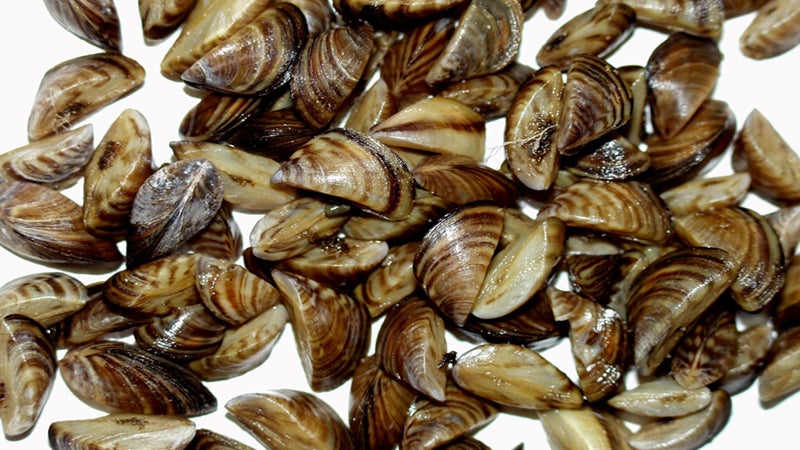LDWF: Beware of damaging Zebra mussels found at pet, aquarium supply stores
Published 8:30 am Saturday, March 6, 2021
|
Getting your Trinity Audio player ready...
|
The Louisiana Department of Wildlife and Fisheries (LDWF) is sounding the alarm that troublesome zebra mussels have been detected in the state in moss ball products designed for aquarium use.
The small zebra mussels can clog pipelines used for water filtration, render beaches unusable, and damage boats. They also negatively impact aquatic ecosystems by harming native organisms. They are sold as an aquarium plant under names such as “Beta Buddy Marimo Balls,” “Mini Marimo Moss Balls,” and “Marimo Moss Ball Plant.”
LDWF biologists say, however, that the numbers detected in Louisiana are small and that the state’s summer heat will probably kill all or most of them. Still, the department warns anyone with the moss balls for their aquariums to be diligent in following the directions concerning locating and disposing of the zebra mussels.
LDWF asks pet, aquarium, and retail stores selling these ‘moss balls’ to remove this product from shelves and discontinue sales.
Information about the emergence of the zebra mussels was presented by the U.S. Fish & Wildlife Service and the Association of Fish and Wildlife Agencies. The Aquatic Nuisance Species Task Force has presented protocols to follow concerning the management of the zebra mussels.
If you have recently purchased a moss ball aquatic plant product, we recommend that you take the following steps:
Decontaminate the moss ball using one of the following methods, ensuring that the disposal method you choose is in compliance with state laws and animal welfare regulations:
- Place the moss ball into a sealable plastic bag and freeze for at least 24 hours, or
- Place the moss ball in boiling water for at least 1 full minute, or
- Submerge the moss ball in chlorine bleach, diluted to one cup of bleach per gallon of water, or
- Submerge the moss ball in undiluted white vinegar for 20 minutes.
Once step one is complete, place the moss ball and any of its packaging in a sealed plastic bag and dispose in the trash.
If vinegar, boiling water, or bleach was used, the liquid can be disposed of down a household drain —never down a storm drain where it could enter and damage local waterways.
If the moss ball was placed in an aquarium, please take these additional steps:
- Collect any fish or other living organisms and place them in another container, with water from a separate, uncontaminated water source.
- Sterilize the contaminated aquarium water by adding ¼ teaspoon bleach for each gallon of water. Let the water sit for 15 minutes and then pour the sterilized water down a household drain.
- Clean the aquarium and accessories using one of the following methods, ensuring that the disposal method you choose is in accordance with manufacturers’ recommendations:
If you are using the boiling method:
- Use water that is 140 degrees F to flush and coat the tank and all accessory surfaces
To use the disinfection method:
- Make a disinfection solution using 1/3 cup of bleach per gallon of water.
- Soak the aquarium, substrate, rocks, décor and filter media in the bleach water solution for 15 minutes.
- Rinse off all items prior to setting up the aquarium.
- Dispose of the previously used filter media and replace with new media.
- Use a dechlorinating product to neutralize any residual chlorine prior to reintroducing aquatic life.
It is recommended that you do another water change within a week and continue to monitor the tank for any unusual or unexpected aquatic life. It is also recommended to never release animals or plants from home aquariums into local waterbodies.
For more information, call the LDWF’s Aquatic nuisance species hotline phone number at 225-765-3977 or email: aquaticinvasives@wlf.




